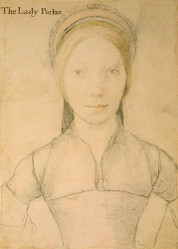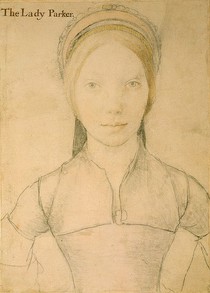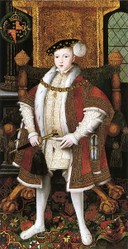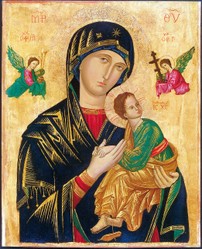Lady Jane Boleyn, also referred to as Lady or Viscountess Rochford, has often become the monster in the plot to bring down the Boleyn faction. In Showtime’s The Tudors, she was seen to admit to a “long night” that Anne and George Boleyn spent together. However, it would have made no sense for her to condemn her husband. Was she really a vindictive woman or did Thomas Cromwell know the best way to break her to use her evidence against her husband?

Lady Jane Boleyn: Vindictive Woman or Pawn in a Plot?
Jane Boleyn is known for her part in bringing down the Boleyn faction. How much of that is really true? Was she just another pawn in Thomas Cromwell's plot for more power?
The Early Life of Jane Parker
Jane was the daughter of Lord Morley, who regularly attended the court of King Henry VIII. She joined the court as soon as she was old enough and enjoyed many of the pageants that the King attended. Very little else is known about her childhood but she was just another political pawn for her father; just as many daughters were in 16th century England.
By the time she was 20, Jane Parker married George Boleyn. Historians often debate about how happy the marriage was. While it was childless, it is unknown whether it was an unhappy as much of fiction portrays it. It is likely that George had affairs. During the reign of Elizabeth I, there was another George Boleyn who stated that he was kinsman of Lord Henry Carey - Mary Boleyn's son and cousin of Elizabeth I. This would have made him George Boleyn's son but the identity of his mother is unclear. There were no reports of Jane having any children before her execution in 1541.
Whether the marriage was unhappy or not does not change the fact that Jane was close to her sister-in-law Anne Boleyn. When Anne became Queen in 1533, Jane became a lady-in-waiting. The two regularly shared secrets and Jane helped Anne removed one of the other ladies-in-waiting; one who Henry VIII was allegedly having an affair with. After this, a cousin of Anne Boleyn became part of the court: Madge Shelton.
During these events, Henry VIII banished Jane from court. Anne did nothing to support her sister-in-law and it is possible that this created some tension. However, would this have really led to jane betraying someone so close to her?
Jane Boleyn Returns to Court
The tension between Jane and Anne did not last. Jane was welcomed back into court and the two became just as close as before. Anne often confided in her sister-in-law about the problems she had with Henry VIII. These secrets may have actually led to the downfall of the Boleyns. There would have been no sense for Jane to purposely share these secrets but it is likely that she shared the information accidentally. During questioning, Thomas Cromwell would have asked many questions in quick succession. Jane would have been under duress and would not have had time to think about the answers. She would have said the first thing that came to her head.
It is also possible that she feared for her own life. By informing Master Cromwell of everything, she may have believed that her life would have been protected. Something that she failed to think about was how she would support herself once her husband was convicted. However, during the questioning, she would not have known that her husband or sister-in-law were being held in the Tower of London on suspicion of treason.
Thomas Cromwell Questions Lady Rochford
Jane was brought in for questioning. Thomas Cromwell unlikely had any evidence to be able to use against Anne or George by this time but needed it. It is clear that Jane shared some type of information according to various historians and sources. In a lost journal by Antony Antony, historians believe that Jane was somehow an instrument in Anne Boleyn's death.
In The Life and Death of Anne Boleyn, by Eric Ives, it is mentioned that Lord Rochford stated: "on the evidence of only one woman you are willing to believe this great evil of me, and on the basis of her allegations you are deciding my judgment."
However, it is unclear who this "one woman" was and it may not have been Jane Boleyn.
In some reports, Jane is stated to have told Master Cromwell about how the relationship between Anne and George was nothing like any other sibling relationship. It is likely that Jane meant that they were extremely close; Anne did share a lot of information and secrets with her brother. It is unlikely that Jane meant there was an incestuous relationship but this was the way that Master Cromwell understood it.
The Tudors shows Jane Boleyn maliciously indicating that Anne and George were having an incestuous relationship. This begs the question of why she would do this. In the 16th century, a married woman was completely reliant on her husband. By being charged of treason, George would lose all his titles and forfeit his lands to the Crown and this would leave Jane with nothing, which is exactly how everything played out. For her own financial reason, Jane would have wanted George to be found innocent.
Jane Boleyn Turns to Thomas Cromwell for Help
After the executions of Anne and George, Jane was left with no money, no land and officially no title. She had to plead to Thomas Cromwell for help. He was able to secure her a place as a lady-in-waiting to Henry VIII's third wife, Jane Seymour. She was also allowed to use the title Viscount Rochford. These events lead to the speculation that Jane did help Master Cromwell remove the Boleyn faction. It is possible that Master Cromwell was rewarding her for her loyalty to the Crown.
On the other hand, it is possible that Thomas Cromwell knew how he had ruined Jane's life and wanted to make up for it. Jane may have simply been a pawn in his plan; one that was a necessity but not one that he wanted. This may have been his apology for twisting her words but a slight thank you for helping him reach his goals.
Whatever the reason, Jane remained as a lady-in-waiting to the next two Queens after Jane Seymour: Anne of Cleves and Kathryn Howard. It was with Henry VIII's fifth Queen Consort that she made another mistake and one that led to her own execution in 1541.
Books Surrounding the Boleyn Women
 |  |  |
| Jane Boleyn: The Infamous Lady Rochford | Jane Boleyn: The True Story of the In... Only $9.99 | Courting Scandal: The Rise and Fall o... Only $9.99 |
Viscountess Rochford Aids Kathryn Howard and Thomas Culpepper
Whilst lady-in-waiting to Kathryn Howard, Jane helped the young Queen Consort in her affair with Thomas Culpepper. The motives of Jane are unknown, since she knew the destruction that affairs - and more importantly treason - could create. It may have been that Jane believed she would be protected or that she believed she was doing nothing wrong. Whatever the reason, she acted as look-out and arranged meetings for the two.
When the affair was brought to light in 1541, Jane was not originally named. It is unknown how her name was mentioned but it is possible that Kathryn Howard or Thomas Culpepper were trying to save their own lives. Jane found herself being questioned again. This time it was not Thomas Cromwell questioning her but that did not stop how fast and thick the questions would have happened. Sometime during questioning, Jane had a nervous breakdown and was pronounced insane.
It was against the law to execute an insane person, which may have been Jane's plan to save her life. However, Henry VIII wanted her punished for helping his fifth wife commit adultery and have an affair. He forced his court to find a way to introduce a bill that would mean insane people could be executed. Why the King felt the need to do this is unclear. It is possible that Henry VIII believed that Jane should have known how it felt to be the victim of an affair; she should never have helped the Queen Consort commit adultery against the King of England.
Henry VIII was a vindictive man and this would have led to his decision to introduce the bill. Jane was not the only person to suffer severe treatment. Francis Derehem, a past lover of Kathryn Howard, was convicted of treason and suffered the execution of being hanged, drawn and quartered even though he had not had an affair with Kathryn while she was Queen.
Lady Rochford Executed February 13, 1542
On February 13, 1542, Jane Boleyn was executed after Kathryn Howard. There are many, differing, accounts of her speech before execution. Some state that she gave a long discourse and 'apologized for her many sins', while others state that the speech contained some truth about Anne and George Boleyn.
Like others who were executed, it is likely that she apologized for her sins. This was not a way of Jane saying that she committed the crimes she was convicted of; but was common practice of all those executed to apologize for various sins throughout their lives. It was a way for those being executed to cleanse their souls before God.
Questions will always surround whether Jane Boleyn was a vindictive woman and the reason for Anne Boleyn's death or whether she was an innocent scapegoat. Thomas Cromwell knew everything that he wanted to hear; he just had to ask the right questions and under enough pressure to make Jane Boleyn talk. He gained the information he needed and started compiling evidence against the Boleyn siblings to have then executed and remove the Boleyn faction from court.
It is very difficult to determine Jane Boleyn's true nature and the circumstances that led to her answers. Fiction never paints her in a good light but there makes no sense for her to give such evidence intentionally to Master Cromwell.
Sources
The Lady in the Tower by Alison Weir, Ballantine Books
Jane Boleyn: The Infamous Lady Rochford by Julia Fox, Weidenfeld and Nicolson, 2007
The Life and Death of Anne Boleyn by Eric Ives, Wiley-Blackwell, 2005
You might also like
England Under the Tudors: Would King Edward VI Have Been a Goo...Edward VI reigned between 1547 and 1553 when he was just a boy. It's hard to ...
The Mystery of the Langham MadonnnaDid England's most sacred statue survive the Reformation's vandalism?









 Alternate History: What If Mary I Had a Child?on 01/26/2015
Alternate History: What If Mary I Had a Child?on 01/26/2015
 Francis II of France Dies: Mary, Queen of Scots Returns Homeon 12/05/2014
Francis II of France Dies: Mary, Queen of Scots Returns Homeon 12/05/2014
 Does Writedge Pay? Payment Proofon 12/03/2014
Does Writedge Pay? Payment Proofon 12/03/2014
 Alternate History: What If Lady Jane Grey Was Not Deposed?on 11/11/2014
Alternate History: What If Lady Jane Grey Was Not Deposed?on 11/11/2014



Comments
There was a big mess. The country at the time was just so unstable -- and Scotland was just the same! I'm slowly going backwards through history and it just doesn't seem to stop! Kings are being deposed, people are doing anything for more power and others just don't know which side to be on.
And thanks! Jo is great at telling her stories. I'm honoured to get her stamp of approval.
You got JoHarrington stamp of approval? You're good!
@aingham69 - Here's the thing, from strictly an American point of view. There was a whole lot of mess going in the history of the monarchs of England and about the only thing that I can see that is cold hard unquestionable fact is the trail of blood! Dang! There were some ruthless people climbing up that ladder!!
Thanks, Jo. It was such a surprise, especially on this one!
Great telling of the story, and congrats on your Editor's Choice Award! Well deserved.